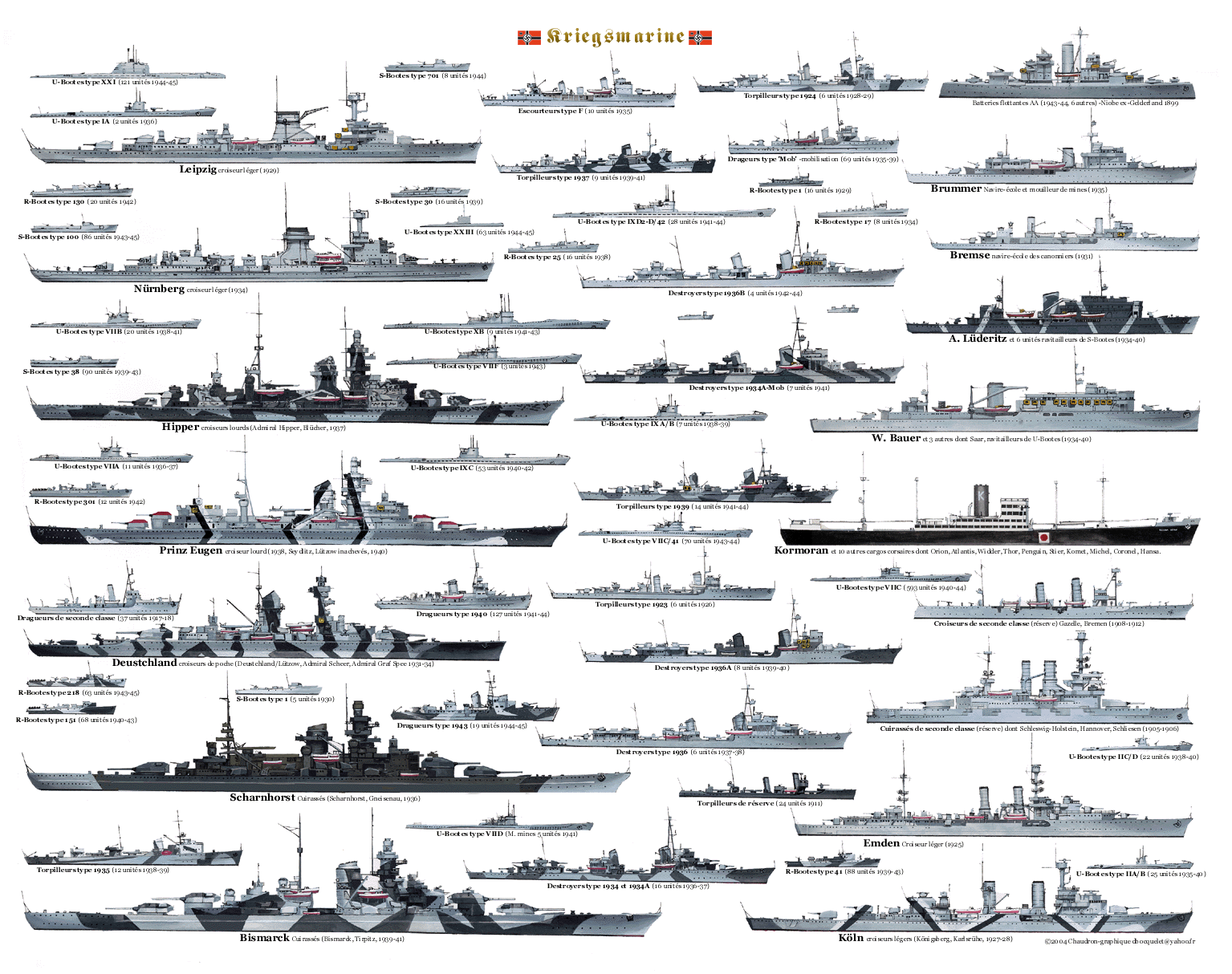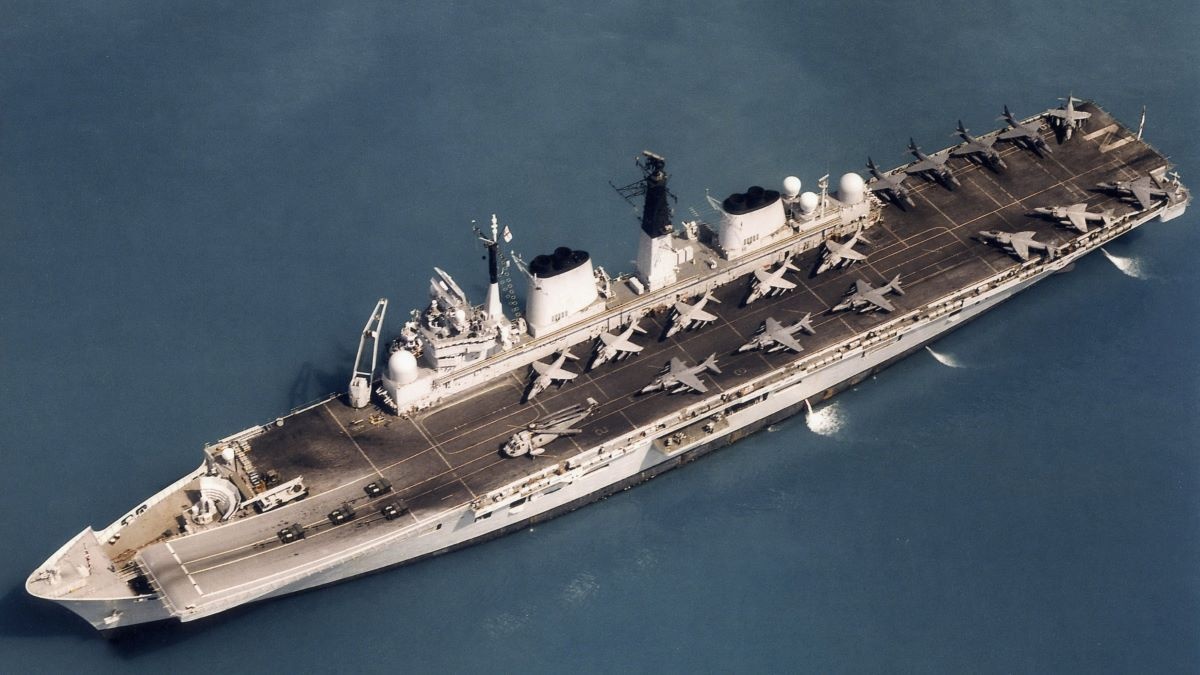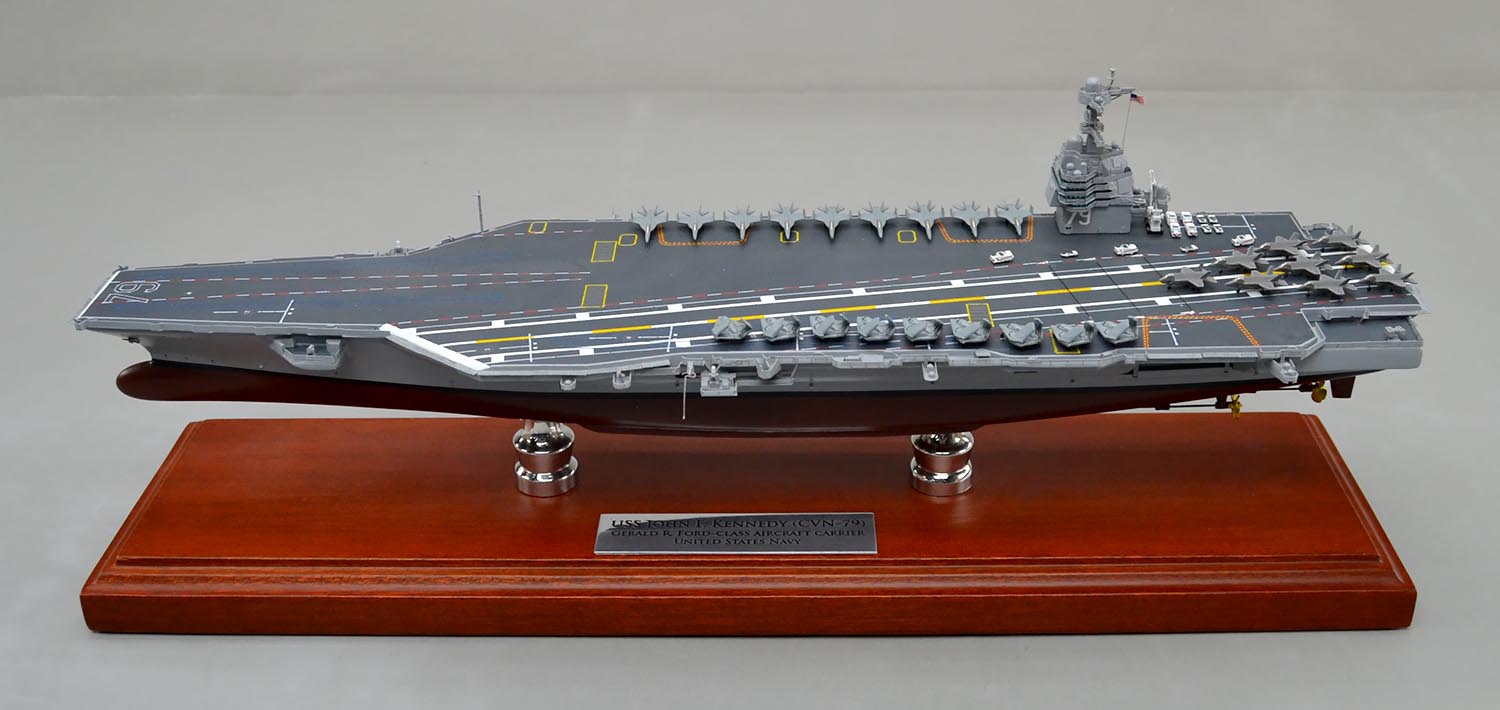Ww2 German Aircraft Carriers - The German aircraft carrier Graf Zeppelin was the capital ship of the two carriers of the same name that served in the Nazi German Navy. She is the only aircraft carrier to be launched by Germany as part of the German Navy's efforts to create a balanced ocean-going fleet capable of projecting German naval power beyond the narrow confines of the Baltic and North Seas. The ship had 42 fighters and dive bombers.
Construction of Graf Zeppelin began on 28 December 1936 when her keel was laid at the Deutsche Werke shipyard in Kiel. The ship, named after Count (Count) Ferdinand von Zeppelin, was launched on 8 December 1938 and was 85% complete by the start of World War II in September 1939. Graf Zeppelin was never completed and was never commissioned due to changes in construction. During the war, his basic war priority remained in the Baltic. With Germany's defeat imminent, her crew scuttled her off Stettin in March 1945. In July 2006, a Polish survey vessel discovered the wreck.
Ww2 German Aircraft Carriers

The Graf Zeppelin is 262.5 meters (861 feet) long overall. She has a beam of 36.2 meters (119 ft) and a maximum draft of 8.5 meters (28 ft). When fully loaded for combat, she could displace 33,550 long tons (34,090 t). The vessel's propulsion system consists of four Brown, Boveri and Cie gear turbines and six Lamont ultra-high pressure oil boilers. The powerplant is rated at 200,000 shaft horsepower (150 MW) and has a top speed of 33.8 knots (62.6 km/h; 38.9 mph). The Graf Zeppelin has a radius of 8,000 nautical miles (15,000 km; 9,200 miles) and a speed of 19 knots (35 km/h; 22 mph). She must have had 1,760 officers, several officers in addition to the crew.
Belleau Wood (cvl 24)
A ship's primary offensive strength will be the integrity of its aircraft. The Graf Zeppelin was designed to carry 42 aircraft: 12 Navy Junkers Ju 87 "Stuka" dive bombers, 10 Messerschmitt Bf 109 fighters and 20 Fieseler Fi 167 torpedo bombers.
Later in the build the Air Force rebuilt it with 30 Jo 87s and 12 Bf 109s, while the Fi 167s were completely abandoned. As designed, Graf Zeppelin will be armed with eight 15cm SK C/28 guns for defense against surface combatants. This number was later increased to six. Her anti-aircraft battery consisted of three 10.5cm SK C/33 guns—later increased to twelve—twenty-two 3.7cm SK C/30 guns and twenty-eight 2cm guns. The ship's flight deck is protected by Wotan Weich steel armor up to 45 mm (1.8 in) thick.
A 60 mm (2.4 in) thick armored deck was located below deck to protect the ship's vitals from air attack. The Graf Zeppelin had a 100 mm (3.9 in) thick waterline armor belt in the chest area of the ship.
On 16 November 1935, the contract for Flugzeugträger A (aircraft carrier A) - later named Graf Zeppelin - was awarded to the Deutsche Werke shipyard in Kiel. Construction of the ship was delayed due to the full capacity of the German shipyards, and the space required for Graf Zeppelin was taken up by the new battleship Gneissau, which was launched on 8 December 1936.
All Guts, No Glory For The Escort Carriers
Graf Zeppelin's work started on December 28, when her pickaxe was dropped. He was launched on 8 December 1938, the 24th anniversary of the Battle of the Falklands.
She was named after the ship's namesake, Heller von Zeppelin. Hermann Göring delivered a speech at the opening ceremony.
By 1939, she was 85 percent complete, with completion expected by mid-1940.

By September 1939, the Luftwaffe formed carrier wing Trägergruppe 186 at Kirholtau, consisting of three squadrons with Bf 109 and Ju 87.
British Navy Still Celebrates Famous Wwii Aircraft Carrier Ark Royal
Meanwhile, Germany's conquest of Norway in April 1940 eliminated any chance of completing Graf Zeppelin. Kriegsmarine is now responsible for protecting Norway's long coastline and numerous port installations, and is in dire need of a large number of coastal artillery and anti-aircraft batteries. At a naval conference with Hitler on April 28, 1940, Admiral Erich Riedel proposed to stop all work on Graf Zeppelin, arguing that if she was commissioned before 1940, the last of her guns Installation will take several months or more. The fire control system was sold to the Soviet Union under a previous commercial agreement.
Hitler agreed to the stop-work order and allowed Riedel to unload Graf Zeppelin's 15-centimeter guns and ship them to Norway. The heavy armament of the ship's twelve 10.5 cm guns has been transferred.
Graf Zeppelin was towed from Kiel to Gotav (Gdynia) in July 1940 and remained there for almost a year. There she was used as a warehouse for German hardwood supplies.
Just before Germany's invasion of the Soviet Union in June 1941, the carrier was moved again, this time to Stettin to protect her from Soviet air raids. In November, Graf Zeppelin returned to Gottf as German forces penetrated deep into Russian territory to neutralize any further threat of air strikes. There she was used as a wood storage container.
Development] New Ai Aircraft Carriers
By the time Raeder met Hitler in April 1942 to discuss naval strategy in detail, the utility of aircraft carriers in modern naval warfare was well established. British ships crippled the Italian fleet at Taranto in November 1940, the German battleship Bismarck in May 1941, and prevented the battleship Tirpitz from attacking two convoys bound for Russia in March 1942. Additionally, the Japanese attack on Pearl Harbor wreaked havoc. U.S. Battle Fleet in December 1941. Eager to provide air cover for the German Navy's heavy surface forces, Reed informed Hitler that Graf Zeppelin could be completed within a year, with another six months for sea trials and flight training. On May 13, 1942, with Hitler's permission, the German Navy High Command ordered the resumption of work on the aircraft carrier.
But technical issues remain daunting. Reeder wanted a new aircraft designed for carrier use. Luftwaffe Marshal Hermann Göring responded that the already overwhelmed German aircraft industry could not have designed, tested and serially produced such an aircraft before 1946. Instead, he proposed retrofitting existing aircraft (Junkers Ju 87 and Messerschmitt Bf again). 109) as a temporary solution until a new variant can be developed. Carrier pilot training will also resume in Travemünde.
The converted carrier aircraft was a heavy version of its land-based predecessor, which required many changes from Zeppelin's original design: the existing catapult required modernization. The handle unit requires a stronger winch. The flight deck, elevators and hangar floors also needed strengthening.

Changes in naval technology have brought about other changes: the installation of air search radar arrays and antennas. Upgraded radio equipment; the fighter manager's armored cockpit was mounted on the main mast (which in turn meant a heavier and stronger mast to support the extra weight of the nacelle). Additional armor for bridges and fire control centers. A new curved funnel cover to protect the director's fighter cockpit from smoke; single 20mm AA guns were replaced with quadruple Flakvierling 38 guns (with a corresponding increase in ammunition supply) to improve overall AA capability. and additional ridges on both sides of the hull to keep the ship stable against this extra weight.
German Cvn Adenauer Class By Silver 70chev On Deviantart
The German Naval Staff wanted all these changes to be completed by April 1943 and the ship's first sea trials to take place in August of that year. That day, Chief Engineer Wilhelm Hadler was appointed to oversee Graf Zeppelin's completion. Hadler plans to first operate the two inboard shafts and their respective propulsion systems, bringing the ship to an initial speed of 25 to 26 knots, fast enough to begin sea trials and conduct aerial training exercises. During the winter of 1943-44 he was expected to be ready for war.
On the night of 27-28 August 1942, Graf Zeppelin, still moored at Gottfau, was the target of the only Allied air strike during the war. Three RAF Avro Lancaster heavy bombers from No. 106 Squadron were sent to German carriers, each carrying a "capital ship" bomb, a 5,600-pound (2,540-kg) shaped-charge warhead designed to in penetrating armor. Target
Unable to see the carrier due to fog, one of the pilots dropped a bomb on the estimated location of the German battleship Gneissau. Another believes he hit Graf Zeppelin directly, but there are no known records of the ship being damaged by a bomb that night.
On 5 December 1942, Graf Zeppelin returned to Kiel and was placed in a floating pond. It looked like he might see the end, but by late January 1943, Hitler was so unhappy with the German Navy, especially the poor performance of its surface fleet, that he ordered the withdrawal of all large ships.
Largest Aircraft Carriers Of World War 2
German aircraft in ww2, american aircraft carriers ww2, german aircraft manufacturers ww2, ww2 german fighter aircraft, us aircraft carriers ww2, ww2 german transport aircraft, german ww2 aircraft, aircraft carriers of ww2, german aircraft carriers ww2, japanese aircraft carriers ww2, secret german aircraft ww2, ww2 german aircraft markings

0 Comments